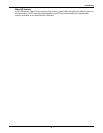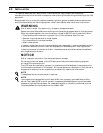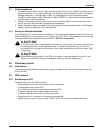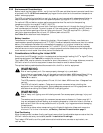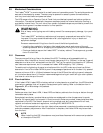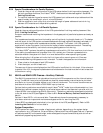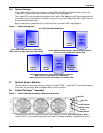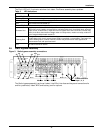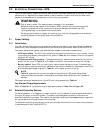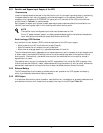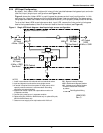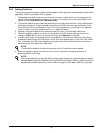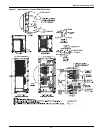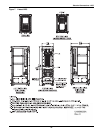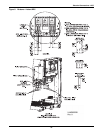
Electrical Connections—UPS
16
3.0 ELECTRICAL CONNECTIONS—UPS
The UPS requires both power and control cabling once it has been mechanically installed. All control
cables must run separate from power cables in metal conduits or metal ducts that are electrically
bonded to the metalwork of the cabinets to which they are connected.
3.1 Power Cabling
3.1.1 Cable Rating
The main factors affecting the choice and size of cable are voltage, current (also taking into account
overcurrent), room temperature and conditions of installation of the cable. Refer to ANSI/NFPA 70.
The power cables of the system must be sized with respect to the following description:
• UPS input cables - The UPS input cables must be sized for the maximum input current, includ-
ing the maximum battery recharge current, given in Table 41, with respect to the unit rating and
the input AC voltage.
• UPS bypass and output cables - The bypass and output cables must be sized for the nominal
output current, given in Table 41, with respect to the unit rating and the output AC voltage.
• Battery cables - Each UPS unit has its own internal batteries factory-wired. If connecting an
external battery cabinet, the battery cables must be sized for the battery discharge current at the
end-of-discharge voltage, as given in Table 41, with respect to the unit rating.
The power cables can be sized to suit the UPS unit rating according to Table 41.
Lug Size and Torque Requirements
Refer to Table 41 for lug size and torque requirements and to Table 18 and Figure 42.
3.2 External Protective Devices
For safety concerns, it is necessary to install external circuit breakers or other protective devices for
the input AC supply of the UPS system. This section provides generic practical information for
qualified installation engineers. The installation engineers should be knowledgeable about regulatory
wiring standards and the equipment to be installed.
To reduce the risk of fire, connect only to a circuit provided with branch circuit overcurrent protection
in accordance with NEC ANSI/NFPA 70.
!
WARNING
Risk of electric shock. Can cause property damage, injury and death.
Before connecting input power to the Liebert
®
APM
™
, ensure that you are aware of the
location and operation of the overcurrent protection devices that connect the UPS
input/bypass supply to the power distribution panel.
De-energize and lockout or tagout all incoming high- and low-voltage power circuits before
installing cables or making any electrical connections.
NOTE
Table 41 gives nominal currents for determining the size of UPS power cables. Other
important factors to consider include cable route length and coordination with protective
devices.



